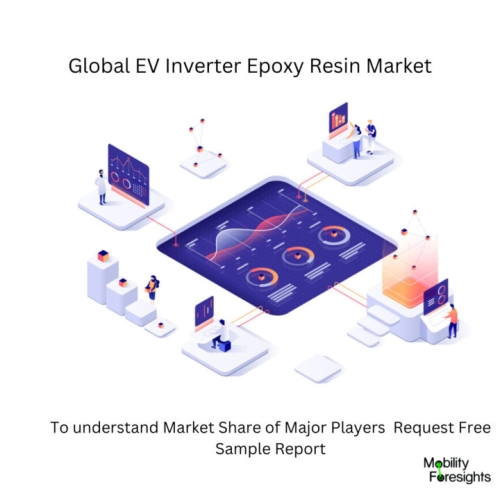
- Get in Touch with Us

Last Updated: Apr 25, 2025 | Study Period: 2024-2030
EV inverter epoxy resin is a type of thermosetting material commonly used in the construction of electric vehicle inverters. It is a two-component system made up of a resin and a hardener, which, when combined, polymerize and form a rigid, durable material.
This material is highly resistant to heat and moisture, making it ideal for use in electric vehicle inverters, which must withstand extreme temperatures and electrical stresses.
EV inverter epoxy resin is composed of an epoxide-based resin and a hardener or catalyst, which are typically combined at a ratio of 2:1. This combination creates a durable, chemical-resistant material, which is strong and resistant to the high temperatures and electrical stresses associated with electric vehicle inverters.
The resin can also be modified to improve its properties, such as its chemical resistance, thermal conductivity, or electrical insulation.
The resin is typically applied to the substrate by spraying or brushing. Depending on the application, the cured material may be machined or finished to provide a smooth, even surface.
The cured material can also be machined, drilled, or tapped to create mounting holes for the electric vehicle inverter components.
EV inverter epoxy resin is an ideal choice for electric vehicleinverters due to its resistance to extreme temperatures, electrical stresses, and moisture.
This material is easy to work with and offers a durable, reliable solution for electric vehicle inverters. In addition, it can be modified to improve its properties to suit the requirements of the application.

The Global EV inverter epoxy resin market accounted for $XX Billion in 2023 and is anticipated to reach $XX Billion by 2030, registering a CAGR of XX% from 2024 to 2030.
Araldite GY 257-2K is a two-component epoxy system with a distinct set of properties. This epoxy resin system offers superior electrical insulation, adhesion, high temperature resistance, and chemical resistance.
It is suitable for use in electrical and electronic applications, such as the production of printed circuit boards, motors, transformers, ballasts, and other components. Araldite GY 257-2K is ideal for the assembly and repair of electrical and electronic components because it provides excellent electrical insulation and adhesion.
High Voltage EP-EV epoxy resins from SolEpoxy provide a high-performance solution for high voltage electrical insulation applications. Their EP-EV epoxy resin series provides excellent electrical insulation and mechanical strength even at high temperatures.
Furthermore, the resins are highly resistant to environmental factors such as moisture, oxidation, and corrosion. This series is available in a range of viscosities and curing times, making it suitable for use in high voltage applications. Additionally, the EP-EV series is UL recognised and IEC certified, which gives it global acceptance.
| Sl no | Topic |
| 1 | Market Segmentation |
| 2 | Scope of the report |
| 3 | Abbreviations |
| 4 | Research Methodology |
| 5 | Executive Summary |
| 6 | Introduction |
| 7 | Insights from Industry stakeholders |
| 8 | Cost breakdown of Product by sub-components and average profit margin |
| 9 | Disruptive innovation in the Industry |
| 10 | Technology trends in the Industry |
| 11 | Consumer trends in the industry |
| 12 | Recent Production Milestones |
| 13 | Component Manufacturing in US, EU and China |
| 14 | COVID-19 impact on overall market |
| 15 | COVID-19 impact on Production of components |
| 16 | COVID-19 impact on Point of sale |
| 17 | Market Segmentation, Dynamics and Forecast by Geography, 2024-2030 |
| 18 | Market Segmentation, Dynamics and Forecast by Product Type, 2024-2030 |
| 19 | Market Segmentation, Dynamics and Forecast by Application, 2024-2030 |
| 20 | Market Segmentation, Dynamics and Forecast by End use, 2024-2030 |
| 21 | Product installation rate by OEM, 2023 |
| 22 | Incline/Decline in Average B-2-B selling price in past 5 years |
| 23 | Competition from substitute products |
| 24 | Gross margin and average profitability of suppliers |
| 25 | New product development in past 12 months |
| 26 | M&A in past 12 months |
| 27 | Growth strategy of leading players |
| 28 | Market share of vendors, 2023 |
| 29 | Company Profiles |
| 30 | Unmet needs and opportunity for new suppliers |
| 31 | Conclusion |
| 32 | Appendix |